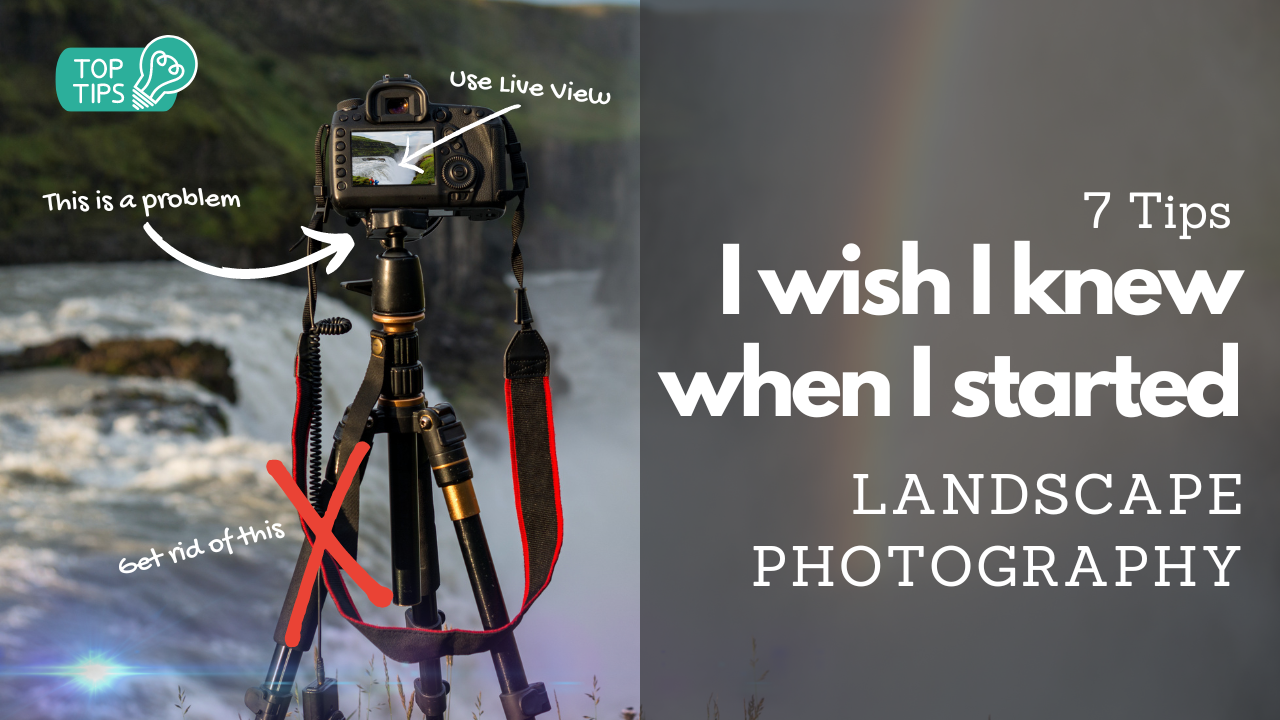7 tips for Landscape photographers to improve their photos | on3legs

Landscape photography is an art form that requires patience, skill and a good eye. After years of practice, I have compiled this list of tips to help you capture the perfect shot. From choosing the right equipment to finding creative angles, these tips can make all the difference in capturing stunning landscape photos. Whether you’re just getting started or you’ve been shooting for years, these seven tips will help you take your landscape photography to the next level.
Use Aperture Priority
When I look through my lightroom catalogue at my image EXIF data, I see that 99% of my images are shot in Aperture Priority. This mode allows me to control the depth of field in my landscape photography. It is also an easy way to make sure your photos are properly exposed without having to adjust your shutter speed because your camera will take care of that for you.
The light constantly changes in landscape photography and the best way to ensure that your photos are consistently exposed is by using Aperture Priority.
Many think that using one of these auto modes is not proper or skilled photography but your camera is very sophisticated and can take care of some of the calculations for you.
Find An Interesting Focal Point
When framing a landscape shot, your eye is naturally drawn to the most interesting element in the photo. This could be anything from a large rock formation, an old tree or an area of high contrast. It’s important to think of landscape photos as a story and focus on the element in your frame that will tell the best story. If you don’t have an interesting focal point in your landscape photo, then it won’t be memorable or stand out from other landscape images.
Spend some time before you set up your camera looking around for interesting elements to feature.
Learn how to read your histogram
The histogram is a graph that shows you the distribution of tones in your image. You can use this information to gauge if your landscape photo is correctly exposed - or if it needs adjustments. The best landscape photos have a good tonal range and details in both the shadows and highlights.
It’s important to learn how to read a histogram and adjust your exposure accordingly to make sure that you are capturing the best landscape photo possible. Your histogram will quickly and accurately show you how well-exposed your landscape photography is.
Use Flashing RGB Highlights to identify highlights quickly
Flashing RGB highlights is a quick and easy way to identify over-exposed areas in your landscape photos. When you turn on flashing RGB, the overexposed areas will flash. This helps you quickly identify any blown-out parts of the landscape photo so that you can make adjustments accordingly.
Never trust your preview screen as it will not show the same image as what you capture on your camera’s sensor. You may have increased or decreased the brightness of your preview screen and this will give you a false representation of your exposure.
Shoot in RAW
When you shoot landscape photos, it’s important to capture them in the highest quality format possible. Shooting in RAW gives you more control over your landscape photos than any other format. You can make adjustments to exposure and white balance after the fact which can help you get the most out of your landscape photos.
Just keep in mind that RAW files are much bigger than JPEGs so they take up more memory card space but they also provide a higher-quality image.
Use LIVE VIEW if you are manually focusing
Manual focusing is sometimes essential to get the sharpest image possible. To assist with this process, you can use your camera’s LIVE VIEW feature which will show you a magnified version of your landscape photo so that you can make sure everything is in focus.
It also helps to take multiple shots at different focus points and then combine them into a single landscape photo with focus stacking. This will ensure that your landscape images are as sharp as possible and you won’t miss any details.
Remove your neckstrap
It’s important to pay attention to small details when doing landscape photography. One of the best landscape photography tips I was ever given is to remove your neckstrap when you are shooting as it can cause camera shake, especially if it is windy.
Removing your neckstrap will give you a steadier base for your and help you capture sharper photos.
Get an L Bracket
An L bracket makes it easier to switch between landscape and portrait orientation quickly without having to adjust your tripod. Your tripod can become unstable if you are tilting your camera by moving your tripod head as it changes your centre of gravity. An L bracket helps to avoid this issue and makes landscape photography much easier.
As an added bonus an L bracket acts like armour for your photography gear and will help to protect it in the event of an accident.
As landscape photographers, we are always trying to improve our skills and capture the best images possible. With these 7 tips for landscape photography, you should be well on your way to taking stunning photos that stand out from other landscape images.
Join us in the On3legs Photography Facebook group where we share more photography tips and tricks! Our community of landscape photographers is eager to help each other become better at capturing beautiful landscapes with their cameras. Let's work together and start creating some amazing landscape photographs!
Download your free copy of my Landscape Photography Camera Setup Checklist
Even the most experienced photographers can ruin a photo with one small mistake. You spend all that time setting up your tripod and camera, but forget to check one thing and the photo is ruined.


